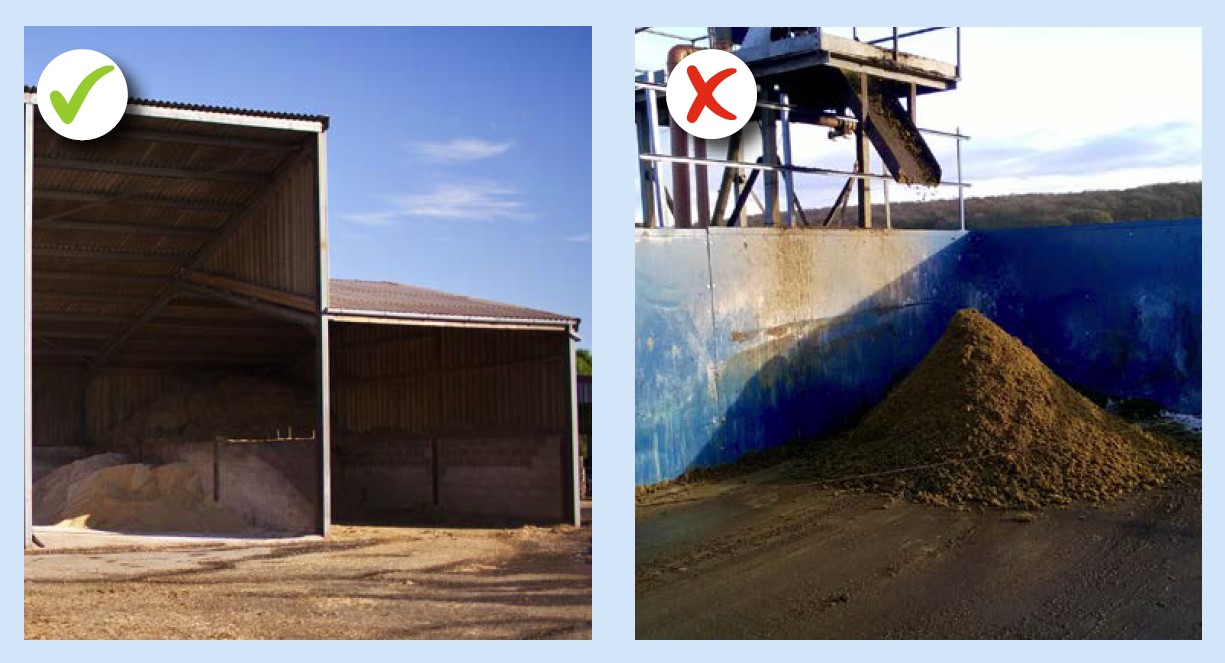- Home
- Knowledge library
- Dairy cow bedding management to control environmental mastitis during lactation
Dairy cow bedding management to control environmental mastitis during lactation
Bacteria is everywhere in the environment. When cows lie down, teats and teat ends will come into close contact with the bacteria in the bedding. With this in mind, bedding management is important, to reduce the risk from environmental sources of mastitis and keep levels of bacteria low near the teats and teat ends.
Back to: Environmental mastitis – the housed dairy cow
Bedding types
The bedding used on farm will depend on availability and cost, as well as cow housing and slurry handling facilities. There are two main types of bedding materials used for dairy cows:
- Organic materials, including straw, sawdust, wood shavings, paper-based products and recycled manure solids
- Inorganic materials, such as sand and chalk
Organic material can be used as a source of food by bacteria, especially if some milk leakage is added. Inorganic material (sand) contains no or fewer nutrients, unless it is contaminated with organic material, such as manure or milk. If inorganic bedding is not well managed, it soon becomes organic with faecal contamination.
A comparison between different types of bedding materials is difficult, but it is generally accepted that clean inorganic materials are better to prevent mastitis and should be used, wherever possible.
Good bedding and cubicle management are critical to minimising risks and successfully using any bedding material.
Bacteria multiply faster in damp and warm conditions. It is important that all types of bedding used are as dry as possible.
Bedding do’s and don’ts
- Damp straw is a major risk factor for mastitis and should not be used to bed lactating cows.
- Poor-quality sawdust can contain Klebsiella bacteria, which can cause severe udder infections.
- Sand is an inorganic material and lacks nutrients, so there is less rapid multiplication of bacteria, but it is important to note:
- Even in sand, bacteria can multiply, especially if contaminated
- Although sand is present for a longer period of time in beds before being refreshed, the bacterial population is lower than with other bedding materials
- Clean, washed sand is ideal. It should break up when you move a ball of it from hand-to-hand three or four times. If it doesn't, there is too much clay content
- Recycled Manure Solids (RMS) or 'Green Bedding' have been used as a bedding material for dairy cows. However, there is only limited information on the risks of mastitis when using RMS, therefore:
- There are regulations covering the use of RMS bedding. Read our RMS research report for more information
- If using RMS, keep under cover and aim for a dry matter content of at least 34%
- Prepare on the day of use, rather than storing
Bedding storage
Ideally, the bedding material should be clean and practical before use. Keep the material dry by storing it under a roof. Covering with plastic often results in mould formation and bacterial growth due to condensation. Prevent the litter from absorbing moisture from a (damp) surface, for example, by using a layer of gravel underneath.
Sand should be stored under a waterproof cover or sheet to keep it clean and dry. Straw, sawdust, paper products and RMS should be stored under a waterproof cover and kept dry at all times.
Bedding materials need to be prepared and stored under cover. This is particularly important for recycled manure solids.

Images courtesy and copyright of James Breen BVSc PhD DCHP MRCVS.
Bedding conditioners
‘Bedding conditioners’ (lime or commercial products) are often promoted for mastitis control. The effectiveness is likely to be affected by the type of bedding material, and the frequency and rate of application.
Studies suggest that bedding treatments need to be applied frequently. The effect of lime appears to last for 24 or, at most, 48 hours. Twice-daily application, along with twice-daily bedding, will likely be more effective and will help keep beds clean. Little and often is easier to keep clean than less frequent application.
Less frequent use, e.g. sprinkling 100 g/cubicle per day of lime on the cubicle bed every day (spring/summer) or every two days (autumn/winter) may help slow down bacterial growth.
It is important to note:
- Do not spray disinfectants onto the cubicle beds because the disinfectant is rapidly inactivated by organic matter. Spraying also adds moisture, which helps bacterial growth
- Keep bedding materials clean and dry before use
Useful links
Dairy cow cubicle housing design to control environmental mastitis in lactation
Loose yard management to control environmental mastitis in dairy cows
Recycled Manure Solids research report
If you would like a hard copy of the Control of environmental mastitis guide please contact publications@ahdb.org.uk or call 0247 799 0069.

